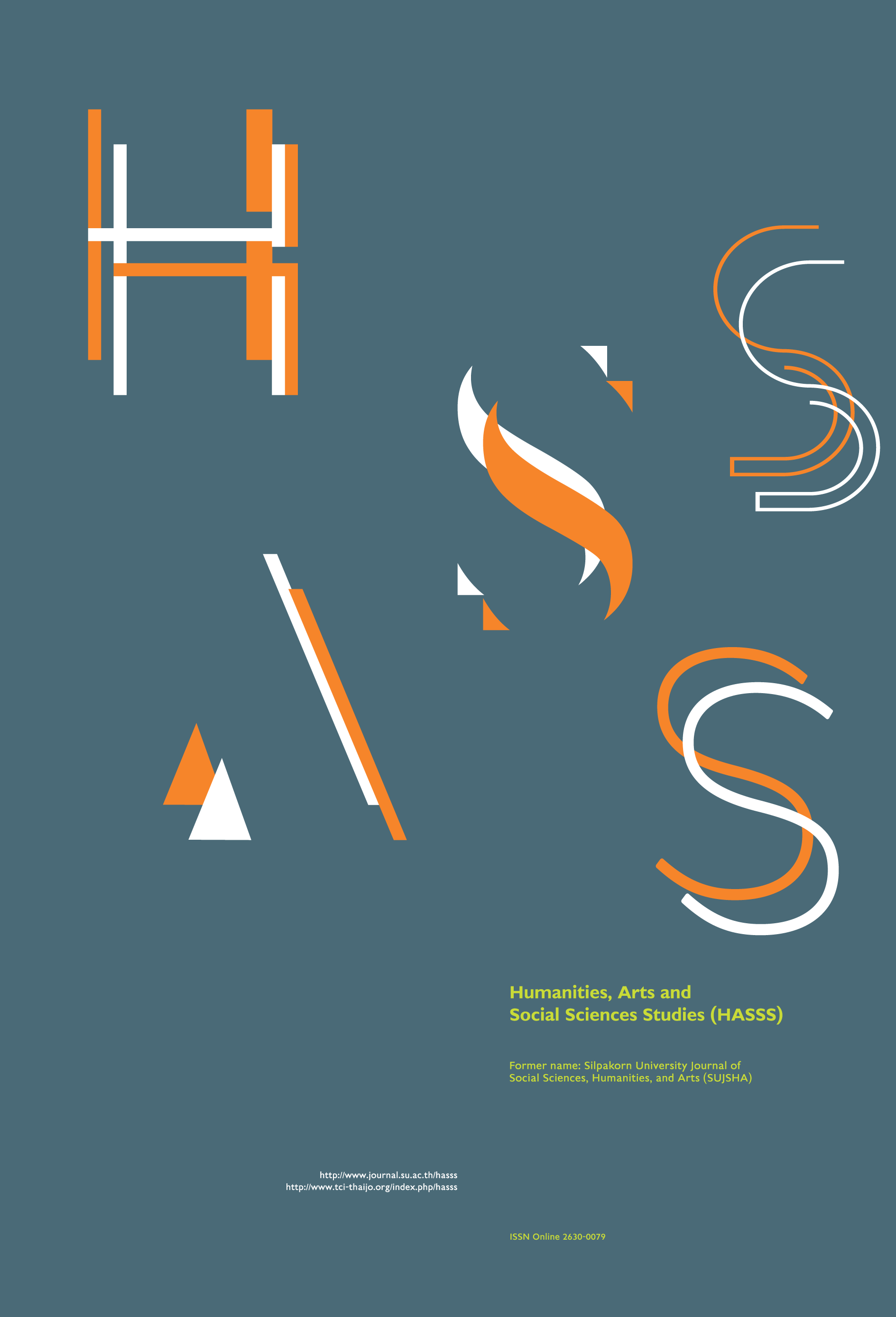Innovative design of caisson lotus pattern in Dunhuang
Main Article Content
Abstract
The main objective of this research was to propose an innovative design method suitable for the traditional lotus pattern, so that the design objects can better inherit excellent characteristics and meet the aesthetic needs of modern people. The study started from the analysis and summary of Dunhuang caisson lotus pattern types and characteristics, then used the diagramming method by compasses and straightedge ruler to geometricize the lotus pattern structure, and evolved the lotus pattern structure based on the shape grammar rules, through the classic blue and white color to color the pattern, thus derived innovative patterns. Finally, in order to verify the feasibility and effectiveness of the method in this paper, the Kansei engineering theory was used to evaluate the design effect of the new lotus pattern applied to the T-shirts favored by college students born after 1990. The results show that according to the shape of the petals, the caisson lotus pattern is mainly divided into simple round-wheel lotus and flat-petal lotus, the peach-shaped lotus known as the prototype of baoxiang flower, the complex and colorful baoxiang flower which is the most popular form in Tang dynasty, afterwards, it returned to the simple shape but with the rotating effect of the curl petal lotus. Through the analysis of the evaluation score of the design effect of the new patterns, it can be seen that each pattern gives a different feeling, on the whole, the new lotus patterns have unique, simple, innovative and neat characteristics, which basically meet the aesthetic needs of college students, this provides a feasible scheme for the innovative design of traditional patterns.
Downloads
Article Details
All rights reserved. Apart from citations for the purposes of research, private study, or criticism and review,no part of this publication may be reproduced, stored or transmitted in any other form without prior written permission by the publisher.
References
Cui, J. and Tang, M. X. (2013). Integrating shape grammars into a generative system for Zhuang ethnic embroidery design exploration. Computer Aided Design 45(3): 591-604.
Fu, X. Y., Ma, X. J. and Sun, Z. J. (2019). Digital restoration of damaged murals: based on Dunhuang murals. Decoration 62(1): 21-27. [In Chinese]
Gu, Z. H. and Wang, Y. J. (2018). Application effect of blue and white patterns of Ming Dynasty on cheongsam. Journal of Textile Research 39(1): 126-132.
Hsiao, Y. C. and Watada, J. (2018). Systematic construction of shape grammars for the form design of the products. KANSEI Engineering International 8(2): 229-237.
Ji, X. L. (1998). Dunhuang academic dictionary. Shanghai: Shanghai Dictionary Publishing House.
Lee, J. H., Park, H. J., Lim, S. W. and Kim, S. J. (2013). A formal approach to the study of the evolution and commonality of patterns. Environment and Planning B: Urban Analytics and City Science 40(1): 23-42.
Luo, X. W. (2018) an analysis of the lotus ornaments of Dunhuang Mogao grottoes in the Tang dynasty. Western leather 40(13): 64. [In Chinese]
Mitsuo, N. (2002) Kansei engineering as a powerful consumer-oriented technology for product development. Applied Ergonomics 33(3): 289-294.
Neeta, R. L. and Alpana, R. D. (2019). A shape grammar approach to contextual design: a case study of the Pol houses of Ahmedabad. India Environment and Planning B 46(5): 845-861.
Sayed, Z., Ugail, H., Palmer, I., Purdy, J. and Reeve, C. (2016). Auto-parameterized shape grammar for constructing Islamic geometric motif-based structures. Transactions on Computational Science XXVIII: Special Issue on Cyberworlds and Cybersecurity 9590: 146-162.
Shi, J. P. and Zhu, J. N. (2011). A research on the knitted stripe apparel based on the perceptual knowledge of the wearer. Knitting Industry 38(1): 53-56. [In Chinese]
Vieira, J., Osorio, J. M. A., Mouta, S., Delgado, P., Portinha, A., Meireles, J. F. and Santos, J. A. (2017). Kansei engineering as a tool for the design of in-vehicle rubber keypads. Applied Ergonomics 61: 1-11.
Wang, H. (2017). Analysis of the pattern decoration of the caisson in the Mogao grottoes at Dunhuang. Art Science and Technology 30(11): 175.
Wang, H. Y. and Liu, G. L. (2014). Study on cognition of grid patterns based on consumer's sensibility demand. Journal of Textile Research 35(11): 151-156.
Xia, P. P. and Wang, Y. H. (2016). Research on the sensibility evaluation of closed clothing patterns. Liaoning Tussah Silk 43(4): 11.
Zhou, Z. (2005). The meaning of patterns - an interview with Chang Shana and students. Decoration 48(4): 94.


